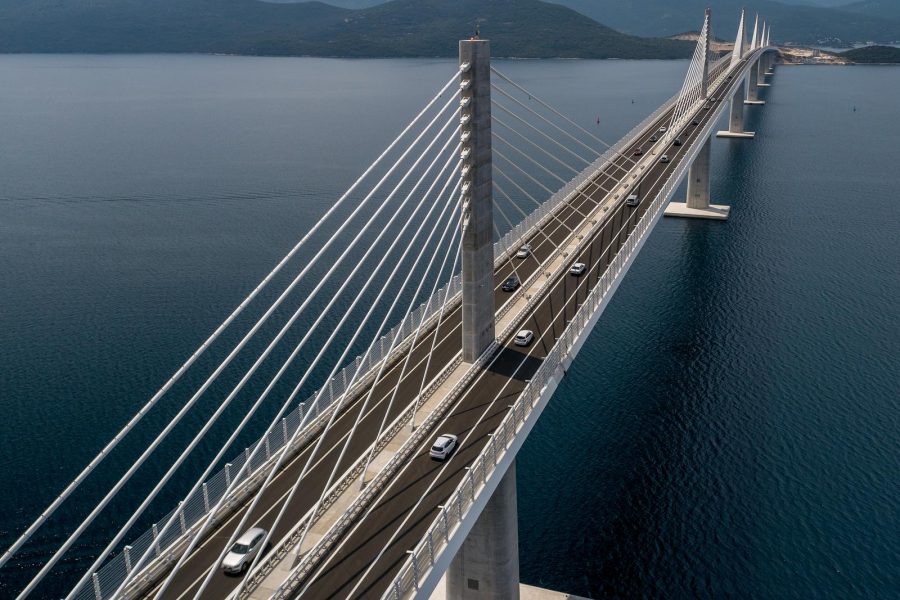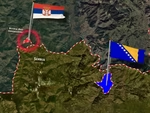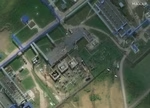
Peljesac Bridge, which opened exactly a year ago, has fulfilled the goals and expectations, according to data which show that by this Wednesday 2,305,537 vehicles crossed the bridge, the pressure on the Neum border crossing has been reduced, and Croatia became united as a whole, which has no price.
According to data from the Hrvatske Ceste road management company, during the high seasons, an average of 13,880 cars per day cross the bridge.
So far this year, 984,596 vehicles have crossed Peljesac Bridge, while the highest number of vehicles in a day, since the inauguration, was recorded on Sunday, 30 July last year, 19,029.
Compared with the record year 2019, before the start of the epidemic, the average daily traffic at the border crossing with Bosnia and Herzegovina (near the bridge) during the summer months was 11,046 vehicles, said Hrvatske Ceste.
No accidents on Peljesac Bridge
Not a single traffic accident occurred on Peljesac Bridge itself, despite the large number of vehicles. Unfortunately, accidents did happen on access roads.
Although part of the media claimed that there was a problem with the asphalt on the bridge, Hrvatske Ceste said that there was no damage, but that there was some minor damage to the fence near the bridge.
The initial problem with pedestrians and cyclists, who were often took photographs on the bridge when it was first opened to traffic, has also been resolved. This is somewhat understandable considering that the bridge, apart from its basic traffic function, is an attraction that many are eager to visit.
According to Hrvatske Ceste, after the first days when all sorts of things happened on the bridge, with the help of the media and the police, it was made clear that Peljesac Bridge is intended exclusively for motor vehicle traffic.
Common motif on social networks
The new bridge is visually attractive. The reactions of travellers are very positive.
Both rest areas, Komarna and Blaca, are very popular, and many people stop to take pictures with the bridge in the background, Hrvatske Ceste said.
Its data show that the bridge significantly reduced the pressure on the Klek and Zaton Doli border crossings, where traffic fell by about 70% compared with 2019.
More specific information was received from the Police Administration of Dubrovnik-Neretva County.
They said that after the opening of Peljesac Bridge, the traffic through the border crossings points of the Neum corridor (Bosnia and Herzegovina) has been significantly slashed. A comparison of the total traffic from 1 July to 26 July this year and last year through the Klek and Zaton Doli border crossings shows a decrease in the number of passengers by 64% and vehicles by 67%.
Peljesac Bridge was built as part of the "Road Connection with Southern Dalmatia" project, which includes the construction of the bridge and access roads.
The total value of the entire project was slightly more than HRK 4 billion (€531 million), and EU grants covered 85% of that amount.
It was one of the most expensive and largest projects in Croatia - a project that bridges the Bay of Mali Ston between Komarna on the mainland and Brijesta on the Peljesac peninsula, thus achieving the Croatia's territorial continuity by road, interrupted by a narrow corridor through which Bosnia and Herzegovina has access to the sea near Neum.
The tender for the construction of the bridge was announced in 2017, and in April 2018, the Chinese company China Road and Bridge Corporation was awarded the job with an offer of HRK 2 billion and a construction period of 36 months.
The Chinese company did the work superbly, even though there were difficult moments during the construction, especially during the COVID epidemic.
The bridge, designed by Slovenian Marjan Pipenbaher, spans a total of 2,404 metres, and it is 55 metres high to meet the request of Bosnia and Herzegovina to ensure the unimpeded and smooth passage of ships to Neum.
The bridge is intended for traffic exclusively by motor vehicles, and traffic goes in both directions on two lanes. There are no sidewalks or bike lanes.
Parallel to the construction of the bridge, access roads were also built on often extremely inaccessible terrain.
Everything was finished on 19 April this year, when the Ston bypass, the section Prapratno - Doli, was put into traffic as the last phase of the road connection with the southern Dalmatia project, which is now officially completed.
Kakvo je tvoje mišljenje o ovome?
Učestvuj u diskusiji ili pročitaj komentare





 Srbija
Srbija
 Hrvatska
Hrvatska
 Slovenija
Slovenija



























































